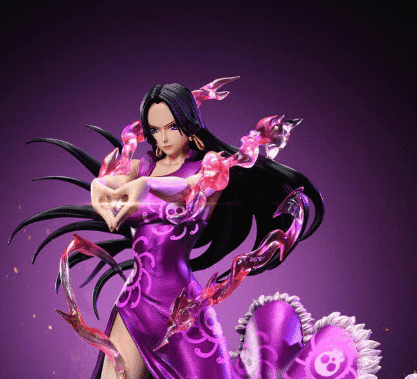The Bronze Age, which lasted from around 3300 BCE to 1200 BCE, was a period of significant technological and cultural advancement. During this time, people began to use bronze, a metal alloy made of copper and tin, to create a wide range of tools and artifacts, including clothing. This was a period of significant development in human history, marked by the widespread use of bronze for tools, weapons, and other items. It was a time when societies began to transition from the use of stone and bone tools to more advanced metalworking techniques. Along with these advancements in technology, there were also significant changes in the way people dressed and adorned themselves during this period. In this article we are delve into the fashion trend and sense of people during the Bronze Age
Why is it called the Bronze Age?
The Bronze Age is known as such because it was a period in human history when the widespread use of bronze for tools, weapons and other items marked a significant technological and societal development. Bronze, an alloy of copper and tin, was a crucial material during this time, and its use had a profound impact on various aspects of human life, including clothing.
What did people wear in the Bronze Age?
Clothing in the Bronze Age was an important aspect of daily life and played a crucial role in defining social status, cultural identity, and personal expression. During the Bronze Age, people wore a variety of clothing made from natural fibers such as wool, linen, and cotton. These titles were used to create a variety of simple garments such as tunics, skirts, and cloaks. Woven fibers were tailored to fit the wearer’s body. Dyeing, sewing and embroidery were also used to add color and decoration to the garments. Accessories such as belts, jewelry, and headwear were also made from a variety of materials such as metal, bone and stone. These accessories created personal style and adornment to clothing. It is safe to say people of the Bronze Age had their own swag.
Clothing during the Bronze Age were both functional and practical, reflecting the needs of the people living during that time. Despite the limitations of the materials available, people during the bronze age were still able to create clothing that was both functional and aesthetically-pleasing. While the specific styles and materials used varied from region to region, there are some general trends and characteristics that are common to Bronze Age clothing. During the Bronze Age, people wore a variety of clothing
Features of Bronze Age Clothing.
One of the most striking features of Bronze Age clothing is the use of textiles. The development of weaving techniques allowed for the production of a wide range of fabrics, including wool, linen, and hemp. These textiles were used to create a variety of garments, including tunics, cloaks, and skirts. In some regions, such as ancient Egypt, fine linen was highly prized and was often used to create elaborate and finely woven garments for the elite.
In addition to textiles, leather was also a popular material for clothing in the Bronze Age. Leather garments such as tunics, trousers, and shoes were commonly worn by both men and women. Leather was valued for its durability and versatility, making it an ideal material for clothing in a time when people relied heavily on their garments for protection from the elements.
Another important aspect of Bronze Age clothing was the use of dyes and decorative techniques. Archaeological evidence suggests that people in the Bronze Age were skilled at creating vibrant and intricate designs on their clothing using a variety of natural dyes and pigments. These designs often featured geometric patterns, animal motifs, and other symbols that held cultural or religious significance. In some cases, clothing was also embellished with beads, shells, and metal ornaments to add further decoration and symbolism.
The style of clothing in the Bronze Age was also influenced by the climate and environment of the region. In colder northern climates, people wore heavier, warmer garments made from wool or fur to protect themselves from the harsh weather. In warmer southern regions, lighter fabrics such as linen and cotton were more commonly used to create loose-fitting garments that provided comfort and ventilation.
The social and cultural significance of clothing in the Bronze Age cannot be overstated. Clothing was not only a practical necessity but also a means of expressing one’s identity and status within society. Different styles of clothing were often associated with specific social roles or occupations, and certain garments were reserved for ceremonial or religious occasions.
For example, in ancient Mesopotamia, wealthy individuals often wore elaborate garments made from fine textiles and adorned with precious metals and gemstones to display their wealth and status. Meanwhile, common laborers would have worn simpler, more utilitarian clothing suited to their daily tasks.
In addition to social status, clothing also played a significant role in religious and ceremonial practices during the Bronze Age. Many cultures believed that certain garments or colors held spiritual significance and were used in rituals to connect with the divine or to mark important life events such as birth, marriage, or death.
The study of Bronze Age clothing is greatly informed by archaeological evidence such as textile fragments, clothing accessories, and depictions of dress found in art and sculpture. For example, the discovery of well-preserved textiles in ancient burial sites has provided valuable insights into the construction techniques, materials, and decorative styles used in Bronze Age clothing.
In recent years, advancements in scientific analysis have allowed researchers to study ancient textiles in greater detail, revealing information about the types of fibers used, dyeing methods, and weaving techniques employed by ancient cultures. This has led to a deeper understanding of the complexity and sophistication of Bronze Age clothing production.
Impact of Bronze Age clothing on contemporary fashion.
One significant impact is the use of natural materials. Bronze Age clothing was typically made from materials such as linen, wool, and leather, which are still widely used in contemporary fashion. The emphasis on natural fibers and materials continues to be valued for their comfort, durability, and sustainability.
Additionally, the Bronze Age introduced the concept of tailoring and fitting garments to the body. This idea of creating clothing that enhances the natural shape of the wearer is still prevalent in modern fashion. The use of draping, pleating, and other techniques to create flattering silhouettes can be traced back to the Bronze Age.
Furthermore, the Bronze Age also influenced the use of decorative elements in clothing. Bronze Age garments often featured intricate embroidery, beading, and metal embellishments. These decorative techniques continue to be used in contemporary fashion, albeit with modern interpretations and materials.
In conclusion, clothing in the Bronze Age was a reflection of the technological advancements, social structures, and cultural beliefs of the time. The use of textiles, leather, dyes, and decorative techniques allowed for a wide range of garments to be created, each with its own unique style and significance. The study of Bronze Age clothing provides valuable insights into the daily lives, beliefs, and artistic achievements of ancient societies, shedding light on the rich tapestry of human history. It’s important to note that while Bronze Age clothing has influenced contemporary fashion, it is just one of many historical periods that have shaped the way we dress today. Fashion is a constantly evolving art form that draws inspiration from various sources, including history, culture, and individual creativity.





